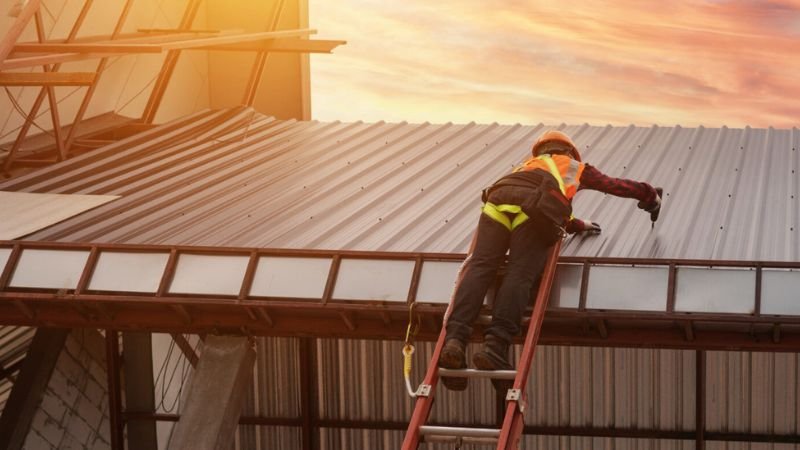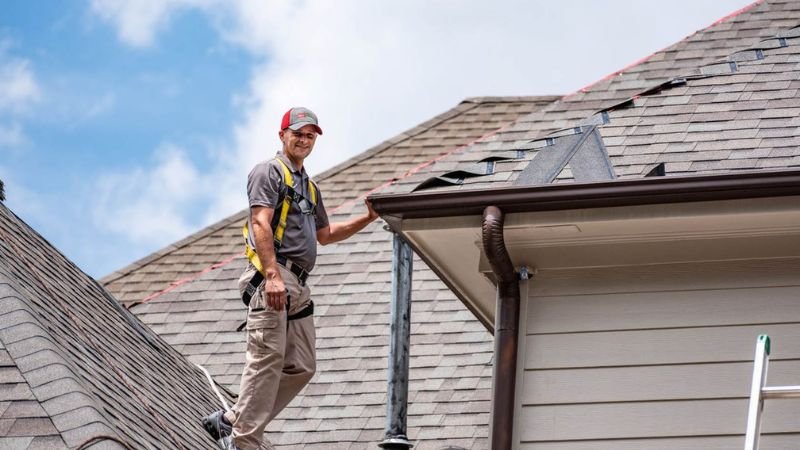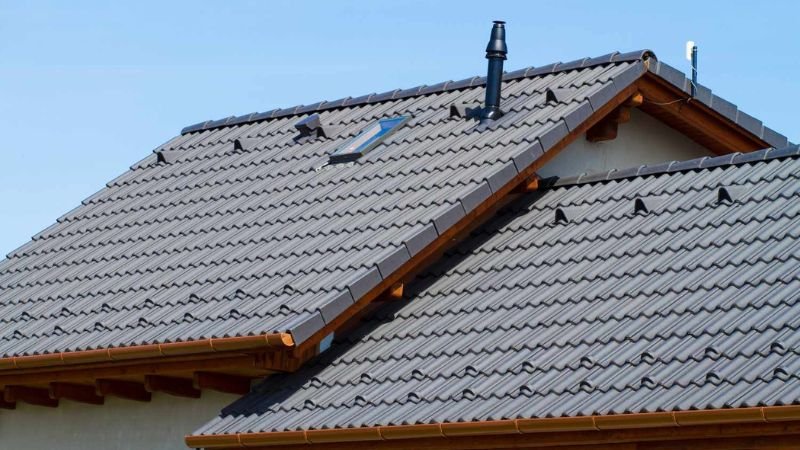Roofing is a high-risk profession, with contractors facing numerous hazards daily. Ensuring safety on the job is crucial to prevent accidents and injuries. This guide provides 10 key safety tips for roofing contractors to help maintain a secure working environment. From proper gear and equipment to training and awareness, these tips are designed to protect you and your crew while on the roof. By adhering to these safety practices, you can reduce risks and enhance productivity. Whether you’re a seasoned contractor or new to the trade, these essential safety tips will ensure you stay safe and efficient on the job.
10 Key Safety Tips For Roofing Contractors
1. Wear Appropriate Safety Gear
Wearing the right safety gear is crucial for roofing contractors. This includes hard hats to protect your head from falling debris, safety goggles to shield your eyes, and non-slip footwear to prevent falls. A safety harness is also essential, especially when working on steep roofs or at significant heights. Gloves can protect your hands from sharp objects and rough surfaces. Each piece of gear plays a vital role in safeguarding you from common roofing hazards. Ensure that all equipment meets the safety standards and is regularly inspected for wear and tear. Proper gear can mean the difference between a minor incident and a severe injury.
2. Conduct Regular Training
Regular training is fundamental for all roofing contractors, regardless of experience level. Training should cover the latest safety protocols, proper use of tools and equipment, and emergency procedures. By staying updated on industry standards and best practices, contractors can work more efficiently and safely. Training should also include fall prevention and rescue plans, as falls are a leading cause of injury in the roofing industry. Continual education helps contractors stay aware of new risks and how to mitigate them effectively. Investing time in training can significantly reduce accidents and ensure a safer work environment.
3. Inspect Equipment Before Use
Before starting any roofing job, it’s vital to inspect all equipment thoroughly. This includes ladders, scaffolds, harnesses, and power tools. Check for any signs of damage or wear that could compromise safety. For instance, ensure that ladders are stable and that harnesses are free from frays. Scaffolds should be set up correctly, and all safety mechanisms on power tools should be operational. Regular equipment checks can prevent malfunctions that lead to accidents. Developing a routine inspection protocol can help identify potential issues before they become serious hazards.
4. Ensure Proper Ladder Safety
Ladder safety is a critical aspect of roofing work. Ensure ladders are placed on a stable, level surface and are fully extended before climbing. To offer a safe handhold, the ladder should be at least three feet above the landing spot. When going up or down a ladder, always face the ladder and keep three points of contact (two hands and one foot or two feet and one hand). Never overload a ladder beyond its weight capacity and avoid using ladders during adverse weather conditions. Proper ladder usage can significantly reduce the risk of falls and injuries.
5. Maintain a Clean Work Area
A clean work area is essential for safety. Clutter and debris on the roof can lead to tripping hazards and obstruct access to safety equipment. Regularly clearing away scrap materials, tools, and other objects can prevent accidents. Additionally, maintaining an organized workspace allows for easier movement and access to necessary tools and safety gear. It also reduces the likelihood of tools falling from the roof and injuring someone below. Implementing a clean-as-you-go policy can help keep the work area safe and efficient.
Also Read – Tips To Deal With Roofing Storm Damage Repairs
6. Use Guardrails and Safety Nets
Guardrails and safety nets are effective fall protection measures. Guardrails should be installed around the perimeter of the roof, particularly in high-risk areas. They offer a tangible barrier to stop falls. Safety nets can be placed below the working area to catch workers if they fall. These nets should be checked regularly for any damage or wear. Utilizing these protective measures can significantly reduce the risk of serious injury from falls, providing an additional layer of safety for roofing contractors.
7. Be Mindful of Weather Conditions
Weather conditions can greatly affect the safety of roofing work. High winds, rain, and snow can create slippery surfaces and increase the risk of falls. Always check the weather forecast before starting a roofing job and plan accordingly. If adverse weather is expected, it may be best to postpone the work. Additionally, ensure that workers are protected from extreme heat or cold, as these conditions can lead to heatstroke or hypothermia. Providing appropriate clothing and ensuring regular breaks can help manage the impact of weather on safety.
8. Follow Proper Material Handling Procedures
Proper material handling is essential to prevent injuries. Roofing materials can be heavy and awkward to maneuver, leading to strains, sprains, and other injuries. Use proper lifting techniques, such as bending the knees and keeping the back straight, to avoid back injuries. Utilize lifting equipment when possible to move heavy materials safely. Ensure that materials are stored securely to prevent them from falling or being blown off the roof. Following these procedures can help reduce the risk of injury and improve overall efficiency.
9. Implement a Fall Protection Plan
A fall protection plan is crucial for roofing safety. This plan should include details on the use of safety equipment, emergency procedures, and training requirements. It should also outline how to identify and mitigate potential fall hazards. Ensure that all workers are familiar with the plan and have received training on its implementation. Regularly review and update the plan to address new risks and changes in regulations. A comprehensive fall protection plan can help prevent accidents and ensure a swift response in case of an emergency.
10. Stay Hydrated and Take Breaks
Roofing work is physically demanding, often carried out in harsh conditions. Staying hydrated and taking regular breaks is essential to maintain safety and productivity. Dehydration can lead to dizziness, fatigue, and heat-related illnesses, increasing the risk of accidents. Urge employees to take regular breaks in a shaded spot and to drink lots of water. Providing electrolyte-rich drinks can also help maintain hydration levels. Regular breaks help prevent fatigue, allowing workers to stay alert and focused. Prioritizing hydration and rest can significantly improve safety and performance on the job.
Conclusion
Roofing contractors should always put their customers’ safety first. By following these 10 key safety tips, you can significantly minimize the risk of accidents and injuries. Remember, proper training, using the right equipment, and staying aware of your surroundings are essential. Implement these practices to protect yourself and your team, ensuring a safer and more productive work environment.
FAQs
Why is proper training important for roofing contractors?
Proper training equips roofing contractors with the knowledge and skills to handle potential hazards, ensuring safety and efficiency on the job.
What kind of safety gear is essential for roofing contractors?
Essential safety gear for roofing contractors includes hard hats, non-slip footwear, harnesses, and gloves to protect against falls, slips, and other injuries.



